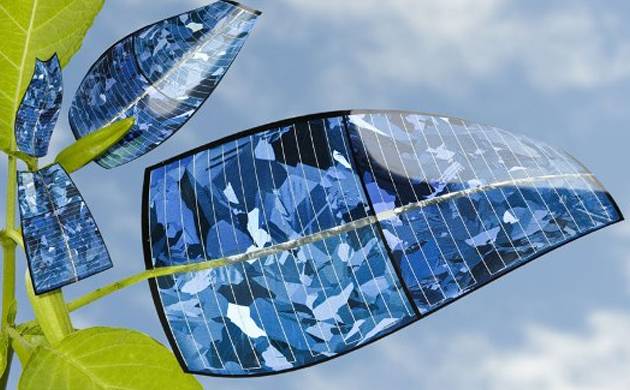Why multidisciplinary teams is a key success factor leading to innovation

Image source: Harvard University. Photosynthesis*: is a process used by plants and other organisms to convert light energy into chemical energy that can later be released to fuel the organisms’ activities (energy transformation). This chemical energy is stored in carbohydrate molecules, such as sugars, which are synthesized from carbon dioxide and water. The photosynthesis equation is simple yet one of the most important in nature:
6CO2 + 6H2O –> (light energy) C6H12O6 + 6CO2
Highlight: ” Researchers at Harvard University have co-created a system that uses solar energy to split water molecules and hydrogen-eating bacteria to produce liquid fuels…this is a true A-to-Z system that has gone well over the efficiency of photosynthesis* in nature… The system can now convert solar energy to biomass with 10 percent efficiency, far above the 1 percent seen in the fastest-growing plants…While the study shows the system can be used to generate usable fuels, its potential doesn’t end there…it provides a platform that can make any downstream carbon-based molecule…so this has the potential to be incredibly versatile.”
Insight: The most innovative breakthroughs often do not arise from a simple field but at the intersection of various disciplines and expertise which highlights the importance of multidisciplinary team work. This specific case is a good example whereby a bionic leaf was made possible combining the expertise of leading experts from very different fields namely: energy, microbiology and engineering.
Multidisciplinary teams are important in any situation where strategic decisions need to be made (e.g. boards). Some key elements of benefits would include:
- Different perspectives to a problematic;
- Idea generations: often people from a specific field are so narrowed within their own school of thoughts that they don’t see other paths;
- Mutual feedback on feasibility (e.g. a problem may be solved through engineering but would not work from an ethical point of view);
- Interconnections and linkage to various fields: often a better alternative comes out by merging ideas from different fields which would not be possible without multidisciplinary teams.
Corporations which solely hire people from a single specific field (e.g. some architecture/engineering/law firms…) without expending their teams with people from very different backgrounds often loose the competitiveness battle and there are many real case studies that showcase this very fact. The most successful companies often have a good mix of talents within their workforce…
The key point here is that if one wants to truly innovate it is perhaps a wise choice to broaden the scope and expertise of the team which tackles the problem…
More information: here
What is Biomimetics: the field of gaining inspiration from nature first to solve some of our most difficult challenges. Instead of coming up with our own solutions to a problematic, the odds are that species or natural systems on the planet already offer an ultimate solution. This simple fact is also another strong case to preserve species at all cost as the intellectual heritage contained within or through the study of species is both irreplaceable and invaluable…

 photo credit: Janet Sinn-Hanlon, Design Group@VetMed.
photo credit: Janet Sinn-Hanlon, Design Group@VetMed.